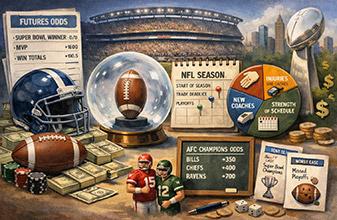Renewable Bankroll Formula

RENEWABLE BANKROLL CALCULATION
Every once in a while the subject of renewable bankrolls come up. I have never seen a mathematical treatment of this, so I decided to see if the problem is solvable.
The question is, if you play part time and add to your bankroll regularly from non-gambling sources, what part of this future income can you include in your current bankroll when sizing bets?
It turns out to be a somewhat tricky problem because in Kelly theory any fixed amount eventually gets swamped by an exponentially increasing bankroll.
It is solvable in closed form. I have derived a formula which I have cross-checked with simulation results to confirm that the desired risk of ruin is maintained. I also believe the formula applies to pure Kelly betting (i.e., constant bet re-sizing) although I have not confirmed that through sims.
Although fairly short, I will save the derivation for a separate post on the Green Chip Theory page.
Suppose you have $9000 currently available for gambling and you can add $3000 a month to that amount. You only play around 12 hours a month, and desire a 5% RoR. What size bankroll can you pretend you have when you size your bets?
MathProf responded that if you are really sure about your savings rate, you could add 12 months to your bankroll making it $45,000. I responded that it will depend critically on the doubling time of the games you find. A high-quality game requires more of your bankroll to be available right away. I guessed that you could include non-gambling income proportional to the doubling time, N 0 Someone else reported that you could simply use double your initial bankroll as your effective bankroll.
Here is my formula:
B = B 0 ( 1 + sqrt(1 + 4 I N 0/(k B 0)) ) / 2
B 0 is your actual present bankroll,
I is your non-gambling income per round (or the
non-gambling income per month divided by the number of
rounds you play per month),
N 0 is the doubling time in rounds,
k is your Kelly factor (use 0.7071 if you desire 5% RoR and no
unit resizing),
B is your effective bankroll that you are allowed to use to size
your bets,
and sqrt() is the "square root" function.
Deciding on effective bankroll: B 0 is $9000. I is $3000/1200 = $2.50, assuming 100 hands per hour and 12 hours play per month. * Now we need to know the quality of the games that will be played.. Spreading fairly aggressively on handhelds, let’s say his doubling time is N 0 = 10,000 rounds. To get a RoR of 5% you choose k = 0. This assumes no unit resizing. Plug in all the numbers -- his $9000 bankroll is now $23,402. Note that this is considerably less than MathProf’s recommended $45,000, but I will try to redeem his intuition shortly. If we instead assume that his N 0 is 20,000 rounds then his effective bankroll is $30,849, and if we use N 0 = 40,000 then we get $41,491.
Additional notes:
1. Estimate of hands per hour is important. If you get a N 0 = 20,000 rounds game but the casino is dead so yougets heads up at 200 rounds per hour, then instead of $30,849 his effective bankroll should be $23,402. This problem can be averted if you know the doubling time in hours instead of rounds, and express your non-gambling income
as per hour of blackjack played. The theory post will include an alternate form of the formula expressed using the popular SCORE term which (if done properly) will avoid this time problem.
2. Be sure you understand that if you are playing with a fixed unit you
are risking more than your original B 0 bankroll. When
you experience ruin you will lose on average somewhere between
B 0 and B. I have some sim results on this which
will go into the theory post.
3. Income tends to buffer changes to your strategy. If you lose half your real bankroll your effective bankroll doesn't drop all the way in half. If you double your real bankroll, the effective bankroll doesn't fully double. If you size your bets for a medium quality game, they are closer to correct for both a better and poorer game than if you had no income.
*Note that we are pretending he gets his non-gambling income in 1200 separate installments. Accountants do this kind of stuff all the time. If it bothers you, you could assume that you could get a cash advance up to one month's savings that you could then pay off at the end of the month. Or else subtract one month's savings from your B 0.











Please log in or register to leave a comment